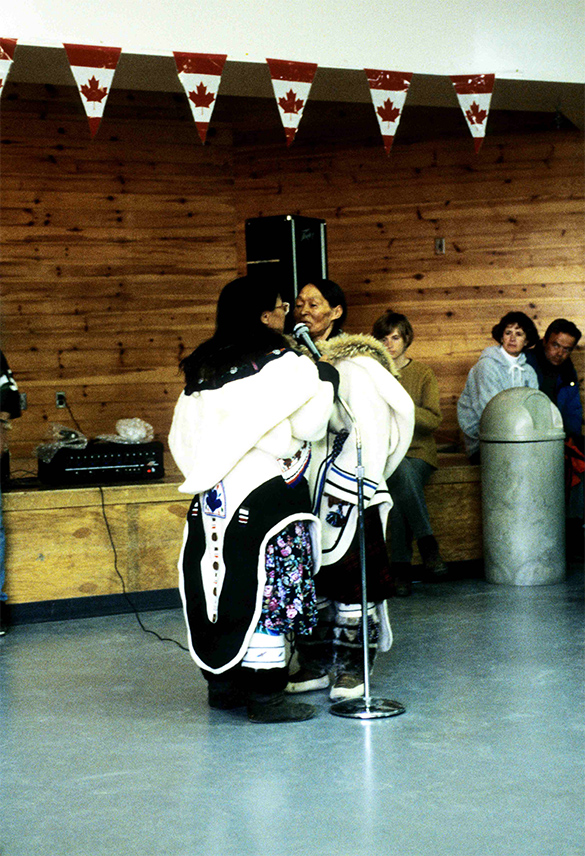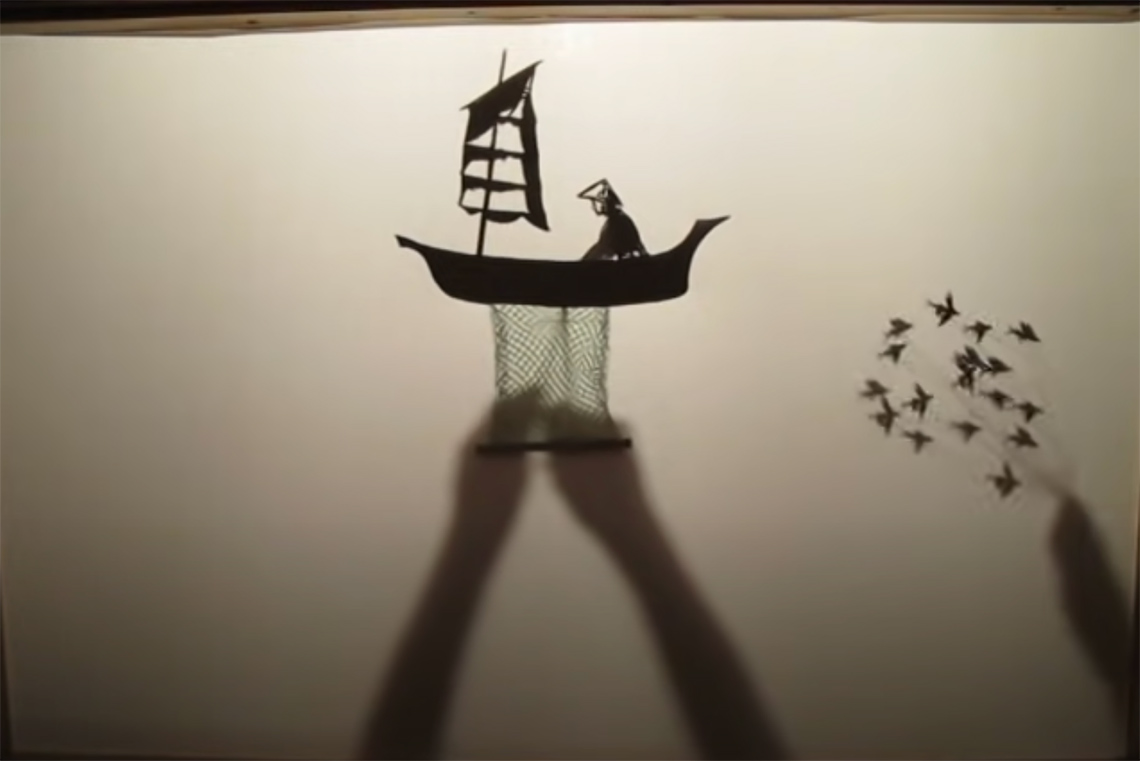Minds On
Let’s warm up!
Don’t forget to do your safety check!
Warm Up
Warm up: Tongue twisters!
Try the following tongue twisters. Can you repeat them?
Let’s try the first tongue twister!
Annie ate eight Arctic apples.

Press ‘Example’ to access an audio recording of someone practising this tongue twister.
Access the following audio recording entitled “Arctic Apples Tongue Twister” to explore an example of someone practising this tongue twister.
Arctic Apples Tongue Twister
Let’s try another tongue twister!
Cooks cook cupcakes quickly.

Press ‘Example’ to access an audio recording of someone practising this tongue twister.
Check out the following audio recording entitled “Cooks and Cupcakes Tongue Twister” to access an example of someone practising this tongue twister.
Cooks and Cupcakes Tongue Twister
Now, give the last tongue twister a try!
Kitty caught the kitten in the kitchen.

Press ‘Example’ to access an audio recording of someone practising this tongue twister.
Explore the following audio recording entitled “Kitty and Kitten Tongue Twister” to check out an example of someone practising this tongue twister.
Kitty and Kitten Tongue Twister
Drama game: Slow motion pretend
Let’s try the following exercises.
Imagine you are in space. How would you move?

Press ‘Example’ to access a demonstration of an astronaut moving in space.
When an astronaut moves in space, they cannot move quickly. They wear a heavy space suit and move in slow motion.
Check out the following video to learn more about slow motion in space.
Now imagine that you are underwater! How would you move?

Press ‘Example’ to access a demonstration of moving underwater.
A scuba diver dives deep into the water. They swim alongside a turtle. The water pushes against them, and they both glide through the water.
Explore the following video to learn more about underwater slow motion.
Oof! Now you are wearing heavy armour. How would you move?

Press ‘Example’ to access a demonstration of moving while wearing something heavy.
A knight marches along a dirt road. Their armour weighs down on them, but they keep marching step by step.
Access the following video to learn more about the slow motion of a knight.
Let’s get started
Explore the next video about the story of “The Three Little Pigs” and consider the following questions.
- What emotions are being expressed in the story?
- What kind of clues do the actors provide to help the audience understand their emotions?
Record your ideas using a method of your choice. Consider adding your work to your drama portfolio.
Action
Get ready, get set…
World theatre
Drama is performed in communities all around the world. Different communities have different ways of doing drama performances.
Differences include:
- costumes
- music
- props
- story
Go!
Let’s explore the video of “The Three Little Pigs” from the Minds On section again.
The video shows an example of opera. Opera started in Italy at the end of the 16th century, which was a very long time ago. What makes opera different is that most of the dialogue is sung, not spoken.
What do you think is the most important element of an Opera?
Press ‘Sample Answer’ to find out.
The most important element of an opera is the music.
Inuit throat singing

Did You Know?
Did you know?
The Inuit are original people from the Arctic and northern regions of Canada, Alaska, Russia, and Greenland. In Canada, the Inuit homeland, Inuit Nunangat, encompasses Nunavut, Inuvialuit (the Northwest Territories and the Yukon), Nunavik (Northern Quebec), and Nunatsiavut (Newfoundland and Labrador).
As we work towards Truth and Reconciliation, information about lands and territories is constantly being updated. This map was created using information available as of March 2022 from Inuit Tapiriit Kanatami.

Inuit throat singing is a type of performance that involves two women who sing duets. They don’t have any instruments; they just use their voices. It takes a lot of breathing to be a throat singer. Sometimes they would have contests to find out who would last until the end.
Explore the next video entitled “Katajjacoustic – Traditional Throat Singing of the Inuit” and answer the questions that follow.
- What do you notice the performers are doing?
- What makes this type of tradition unique or special?
Press ‘Sample Answer’ to find out.
The performers are using their breath and voice to make sounds and copy each other. The way in which they are using their breath and voice makes this type of tradition unique from other ways of singing.
Did You Know?
Did you know?
Inuit throat singing is performed by women only. It is usually performed in groups of two. It was often played as a game in which both women would identify who would be the first to lose their breath or start to laugh.
Shadow puppets

Did You Know?
Did you know?
Chinese Shadow puppetry are made out of leather or paper. Chinese shadow puppetry shares traditional plays and stories. The beginning of Chinese shadow puppetry might have been in the Han dynasty over two thousand years ago!
Shadow puppets is a type of drama production that involves puppets! Shadow puppet theatre is done all over the world. It started in China and is now done all over the world.
Explore the next video entitled “The Legend of Urashima Taro” and answer the questions that follow.
- What do you notice that the performers are doing?
- What makes this type of tradition unique or special?
Press ‘Sample Answer’ to find out.
The performers are using the shadow puppets to tell the story. Using shadow puppets to tell a story makes this type of tradition unique or different from other puppet shows.
Consolidation
Video reflection
Choose one of the following videos that you enjoyed and connected with in the Action section.
You can choose the following video entitled “Katajjacoustic–Traditional Throat Singing of the Inuit” for this activity.
Another choice for this activity could be the following video entitled “The Legend of Urashima Taro.”
After you have reviewed your chosen video, answer the following questions.
- What did you like about the performance?
- Did you learn something new from the performers/performance?
- How did this performance make you feel?
Complete the Video Reflection Organizer in your notebook or using the following fillable and printable document. If you would like, you can use speech-to-text or audio recording tools to record your thoughts. Consider adding your work to your drama portfolio.
Press the ‘Activity’ button to access Video Reflection Organizer.
Portfolio
Drama portfolio
Think about the types of theatre you have explored. What makes them unique or special? Record your thoughts in your drama portfolio.

Reflection
How do you feel about what you have learned in this activity? Which of the next four sentences best matches how you are feeling about your learning? Press the button that is beside this sentence.
I feel…
Now, record your ideas about your feelings using a voice recorder, speech-to-text, or writing tool.